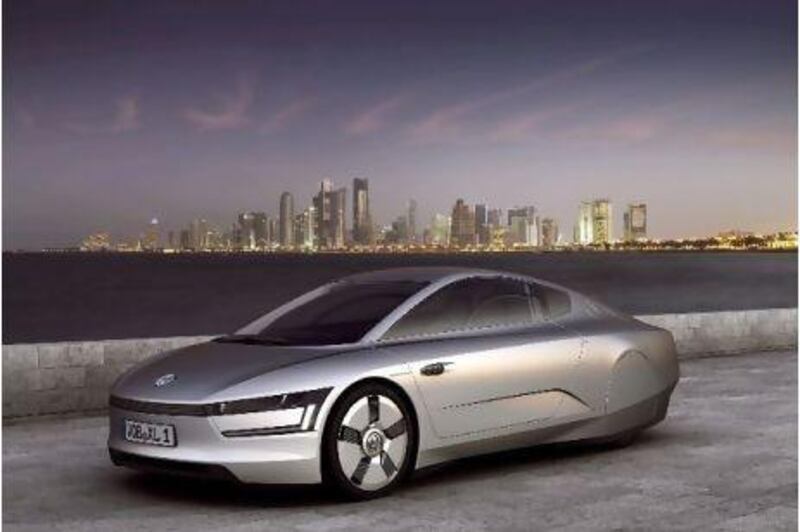Volkswagen chose the inaugural Qatar Motor Show to unveil its XL1 Super Efficient Vehicle (SEV), the third evolution of its one-litre car strategy, some version of which the company will produce in two years' time.
It's not surprising why VW chose Qatar; the country's investment firm holds a 17 per cent stake in VW and a 10 per cent share of Porsche, which falls under the VW Group umbrella.
It's also not surprising, then, that most of the important VW board members were in attendance at the show. Martin Winterkorn, chairman of the board of management at VW, presented the XL1 to the emir of Qatar, Hamad bin Khalifa Al Thani, at a gala event in the impressive Qatar Science and Technology Park before the opening of the motor show.
The XL1 is a small, two-seat vehicle with a diesel-electric hybrid powertrain. According to VW, it has a fuel economy of merely 1L/100km. Both Winterkorn and Ferdinand Piech, VW's supervisory chairman, confirmed the car will be produced in limited numbers, first for the German market.
To keep the weight down, VW used a carbon fibre-reinforced polymer monocoque tub with a production process it says makes it far cheaper to produce in higher numbers. Indeed, the LX1 weighs a scant 795kg. As well, the streamlined body has a coefficient of drag of just .186, compared with that of the Golf at .31, for more fuel efficiency. It certainly looks like it came from the future; with its covered rear wheels and forward-raising doors it would look at home in Total Recall, Blade Runner or any number of sci-fi films.
At the heart of the vehicle is its propulsion system, though it's nothing groundbreaking. The car is a plug-in, parallel hybrid, with an electric motor and batteries that allow the car to travel up to 35km on electricity alone. But it's mainly there to boost the two-cylinder diesel engine, rated at just 47hp, and power goes to the wheels in either pure electric or hybrid mode via a seven-speed, dual-clutch gearbox.
The VW Group was by far the most dominant presence at the show, with Audi, Porsche, Lamborghini, Bentley, Skoda and Volkswagen, all under the group, in attendance, and all save Skoda had a regional debut of some sort.
Of note, VW showed its Race Touareg, a street-legal version of the car that was piloted to victory at the Dakar Rally in January by Qatari Nasser al Attiyah. Beside it was the Gold Edition Touareg, a garish rendition of the SUV with 24-karat gold rims and trim and a flashy white interior to match the exterior colour. No doubt it would sell well in this region.
Audi had its e-tron Spyder electric concept, while Lamborghini brought its Lamborghini Gallardo LP560-4 Bicolore - basically, a Gallardo with a two-tone paintjob.
Bentley also had its Flying Spur Arabia Edition, but the sexiest car on display was in the Porsche booth. The company brought its lovely 918 RSR hybrid race car concept, which debuted at the Detroit motor show a few weeks ago, to the show, and it was by far the most popular car with both journalists and the public alike. You can see it in photographs, but I can report that it looks even better in person. The company also unveiled its Panamera 4S Middle East edition, limited to just 66 cars. All are done in white with a black and red interior and special badging and edition plates.
Before the show, at its new dealership in Doha Porsche officials reported that last year was the most successful for the brand in the Middle East and Africa, with a sales increase of 20 per cent and total vehicles sold numbering 6,842. Unsurprisingly, the Cayenne sport-utility vehicle was by far its best-selling car, with the four-door Panamera, introduced last year, coming in second place.






